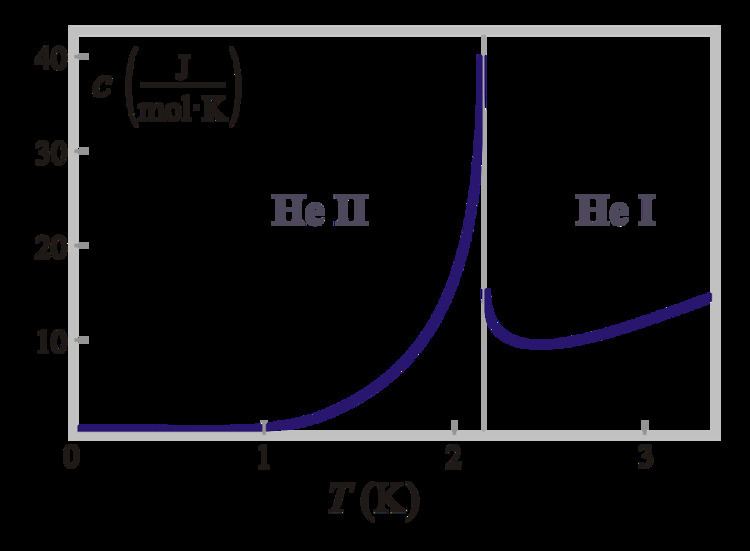 | ||
The Lambda point is the temperature at which normal fluid helium (helium I) makes the transition to superfluid helium II (approximately 2.17 K at 1 atmosphere). The lowest pressure at which He-I and He-II can coexist is the vapor−He-I−He-II triple point at 2.1768 K (−270.9732 °C) and 5.048 kPa (0.04982 atm), which is the "saturated vapor pressure" at that temperature (pure helium gas in thermal equilibrium over the liquid surface, in a hermetic container). The highest pressure at which He-I and He-II can coexist is the bcc−He-I−He-II triple point with a helium solid at 1.762 K (−271.388 °C), 29.725 atm (3,011.9 kPa).
The point's name derives from the graph (pictured) that results from plotting the specific heat capacity as a function of temperature (for a given pressure in the above range, in the example shown, at 1 atmosphere), which resembles the Greek letter lambda. The specific heat capacity tends towards infinity as the temperature approaches the lambda point. The tip of the peak is so sharp that a critical exponent characterizing the divergence of the heat capacity can be measured precisely only in zero gravity, to provide a uniform density over a substantial volume of fluid. Hence the heat capacity was measured within 2 nK below the transition in an experiment included in a Space Shuttle payload in 1992.
